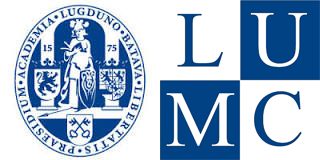By O. P. Gobée, dept. of Anatomy and Embryology, Leiden University Medical Center , Last updated 22 Feb 2018
The rectus abdominis muscle explained in a drawing
By Prof. Marco DeRuiter, LUMC
A short fragment explaining the rectus abdominis muscle.
(00m16s)  The complete video can be seen here.
The complete video can be seen here.
The rectus abdominis muscle explained in a drawing
By Dr. David Morton, Univ. of Utah.
A short explanation of the rectus abdominis muscle as 'sixpack' or 'eightpack' with a nice drawing.
(00m35s) 
The complete video can be seen here.
The rectus abdominis muscle in a dissection
By Prof. Marco DeRuiter, LUMC
The anterior layer of the rectus sheath is opened, exposing the rectus abdominis muscle. The tendinous intersections are elaborated on. Next the rectus muscle is cut and flipped open, revealing the posterior layer of the rectus sheath. The arcuate line, the inferior border of the posterior rectus sheath, is clearly shown.
(03m39s) 
- Note that the video at a certain moment mentions that the navel is the place where the transition occurs from the aponeuroses running partially anterior and partially posterior of the rectus to the situation where all aponeurosis run posteriorly of the rectus. This is a simplification that might be confusing. Later on in the video, the more exact transition place, the arcuate line, is mentioned and shown.
- The complete video can be seen here.
The formation of the rectus sheath by the aponeuroses of the lateral abdominal wall muscles
By Dr. David Morton, Univ. of Utah.
It is shown in a cross-section that the routing of the aponeuroses of the lateral abdominal wall muscles forming the rectus sheath is different above and below the arcuate line.
(02m45s) 
- Note that the end of the video, in the drawing, the arcuate line is indicated on the anterior rectus sheath. This is a mistake, the arcuate line is the inferior border of the posterior rectus sheath.
- The complete video can be seen here.
Tendinous intersections; are they failed ribs?
By Prof. Marco DeRuiter, LUMC
Besides the fact that the tendinous intersections underlie the well known 'sixpack' appearance of the rectus abdominis, they are interesting in more ways: learn it in this video. If they would have become ribs, would you still be able to bend forward?
(01m43s) 
The complete video can be seen here.
 View license
View license If you use this item you should credit it as follows:
- For usage in print - copy and paste the line below:
- For digital usage (e.g. in PowerPoint, Impress, Word, Writer) - copy and paste the line below (optionally add the license icon):
"Rectus abdominis muscle" by , license: CC BY-NC-SA




Comments